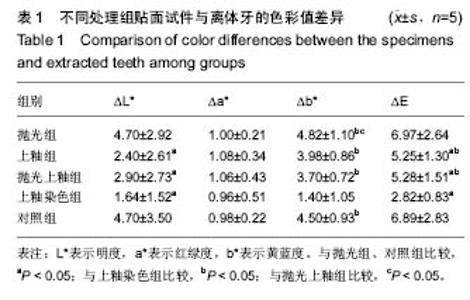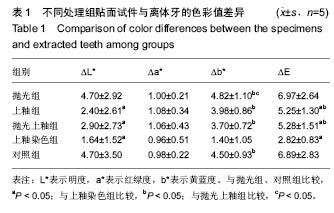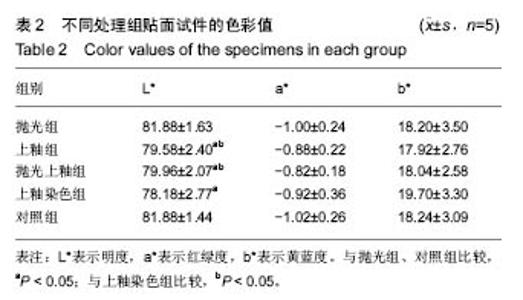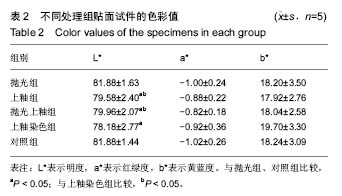| [1]马红梅,李阳,陶世亮,等.CEREC AC椅旁即刻全瓷修复短期疗效评价[J].口腔医学,2014, 34(2):87-90.[2]杨坚.CAD/CAM椅旁系统在微创美学修复中的应用[J].中国实用口腔科杂志,2013,6(6): 337-341.[3]Çömleko?lu M E,Paken G,Tan F,et al.Evaluation of Different Thickness,Die Color,and Resin Cement Shade for Veneers of Multilayered CAD/CAM Blocks.J Prosthodont. 2016;25(7): 563-569. [4]刘峰.超薄瓷贴面的临床应用和进展[J].中华口腔医学杂志,2015, 50(11):646-649.[5]Della Bona A,Pecho OE,Ghinea R,et al.Colour parameters and shade correspondence of CAD–CAM ceramic systems.J Dent.2015;43(6):726-734.[6]Turgut S,Bagis B,Ayaz EA.Achieving the desired colour in discoloured teeth, using leucite-based cad-cam laminate Systems.J Dent.2014;42(1):68-74.[7]Alqahtani MQ,Aljurais RM,Alshaafi MM.The effects of different shades of resin luting cement on the color of ceramic veneers. Dent Mater J.2012;31(3): 354-361.[8]卫文娟,孙迎春,高平.瓷贴面修复临床应用的研究进展[J].国际口腔医学杂志,2010,37(5): 604-607.[9]Baroudi K,Ibraheem SN.Assessment of Chair-side Computer-Aided Design and Computer-Aided Manufacturing Restorations:A Review of the Literature.J Int Oral Health.2015; 7(4):96-104.[10]Santos Jr GC,Santos Jr MJ,Rizkalla AS,et al.Overview of CEREC CAD/CAM chairside system.Gen Dent. 2013;61(1):36-40.[11]Leung BT,Tsoi JK,Matinlinna JP,et al.Comparison of mechanical properties of three machinable ceramics with an experimental fluorophlogopite glass ceramic.J Prosthet Dent. 2015;114(3):440-446.[12]Quinn GD,Giuseppetti AA,Hoffman KH.Chipping fracture resistance of dental CAD/CAM restorative materials:Part I–Procedures and results.Dent Mater.2014;30(5):e99-e111.[13]洪延青,宓勇,姜涛.Vita Mark II与饰瓷结合强度的比较与分析[J].实用口腔医学杂志,2014, 30(2):169-172.[14]Reich S,Hornberger H.The effect of multicolored machinable ceramics on the esthetics of all-ceramic crowns.J Prosthet Dent.2002;88(1):44-49.[15]Herrguth M,Wichmann M,Reich S.The aesthetics of all-ceramic veneered and monolithic CAD/CAM crowns.J Oral Rehabil.2005;32(10):747-752.[16]朱光宇,廖红兵,王玲菲,等.影响电脑比色仪临床测量精确度的分析研究[J].广西医科大学学报, 2013,30(2):246-248.[17]Johnston WM,Kao EC.Assessment of appearance match by visual observation and clinical colorimetry.J Dent Res. 1989; 68(5):819-822.[18]Cho MS,Lee YK,Lim BS,et al.Changes in optical properties of enamel porcelain after repeated external staining.J Prosthet Dent.2006;95(6):437-443.[19]樊聪.瓷贴面修复临床应用[J].中国实用口腔科杂志, 2011,4(8): 451-453.[20]Y?lmaz K,Gonuldas F,Ozturk C.The effect of repeated firings on the color change of dental ceramics using different glazing methods.J Adv Prosthodont.2014;6(6):427-433.[21]Akar GC,Pekkan G,Çal E,et al.Effects of surface-finishing protocols on the roughness, color change,and translucency of different ceramic systems.J Prosthet Dent.2014;112(2):314-321.[22]Özarslan MM,Büyükkaplan U?,Barutcigil Ç,et al.Effects of different surface finishing procedures on the change in surface roughness and color of a polymer infiltrated ceramic network material.J Adv Prosthodont.2016;8(1):16-20.[23]Manjuran NG,Sreelal T.An in vitro study to identify a ceramic polishing protocol effecting smoothness superior to glazed surface.J Indian Prosthodont Soc. 2014;14(3):219-227.[24]Aksoy G,Polat H,Polat M,et al.Effect of various treatment and glazing (coating) techniques on the roughness and wettability of ceramic dental restorative surfaces. Colloids Surf B Biointerfaces.2006;53(2):254-259.[25]蓝巧瑛,阳佳兴,袁艺,等.不同抛光及上釉方法对牙科陶瓷表面粗糙度的影响[J].中华口腔医学研究杂志(电子版), 2011,5(3): 33-37.[26]马桂芳,赵鑫,王迎捷,等.不同打磨及上釉方法对烤瓷表面性状的影响[J].实用口腔医学杂志, 2008,24(2):202-204.[27]Silva TM,Salvia AC,Carvalho RF,et al.Polishing for glass ceramics: Which protocol?J Prosthodont Res.2014;58(3): 160-170. [28]李丹,白保晶,张振庭.可切削瓷贴面厚度及粘接剂对变色牙遮色效果的影响[J].北京口腔医学,2014,22(1):27-29. |



